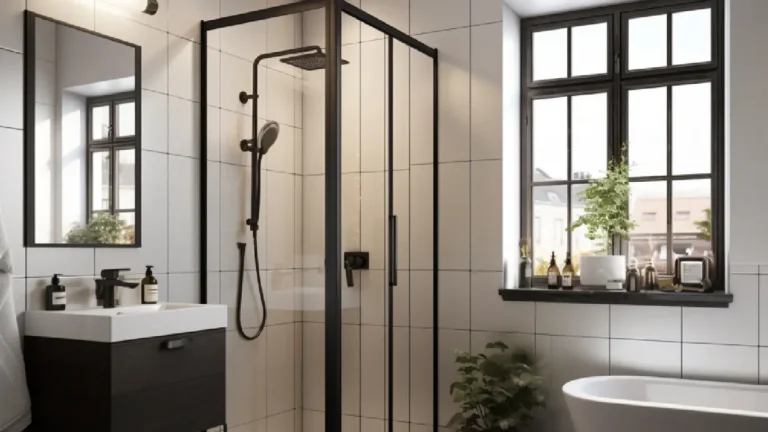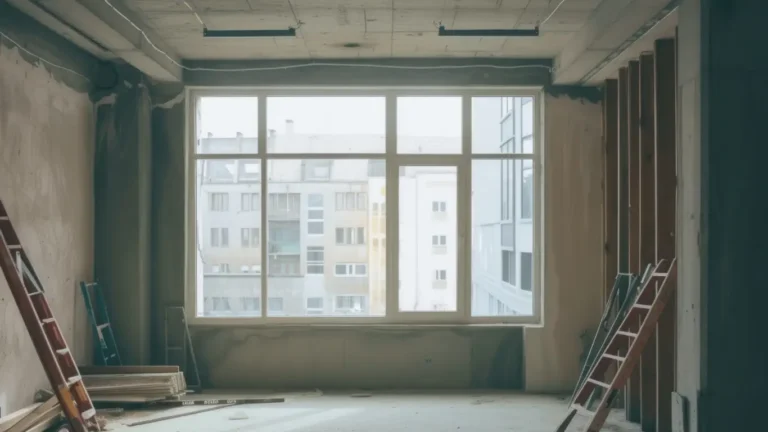What Are Commercial Hollow Metal Doors?
Industrial and heavy-traffic doors are comprised of 18-gauge steel sheets. Heavy-duty hollow metal doors use 16-gauge steel sheets, whereas lighter-duty ones use 20-gauge. A business hollow metal door typically measures 1-3/4″.
Most people believe hollowed-out metal doors are uninsulated metal shells—quite the opposite. Insulation is hidden in the hollow metal door’s steel panels. Polystyrene cores are the most frequent. Other cores include honeycomb, polyurethane, and steel reinforced. Every core has its benefits and uses.
Superior hollowed-out metal doors include hot-dipped zinc-coated steel sheets. We call these hollow metal doors galvanized or galvannealed.
ASTM A 924/A 924M and ASTM A 653/A 653M are the Steel Door Institute zinc coating standards for hollow metal doors. Since hot-dipping zinc heat forms a new zinc-iron alloy layer on steel sheets, galvanized hollowed-out metal doors are popular. Without preparation, galvanized paint adheres to metal doors.
A thick coating makes the steel door more resistant to dings and dents. Finally, galvanized steel doors are easy to weld for reinforcements or extras.
4 Types of Commercial Hollow Metal Doors
1. Flush Hollow Metal Doors
Flush hollow doors have smooth faces on both sides. Flush hollow doors are arguably the most prevalent elevation in business settings. It offers security, insulation, and a clean, finished appearance. A flush door with the correct core material may withstand a fire for up to three hours. A metal door that is flush and hollow.
2. Hollow Metal Doors With Windows
Windows of varying sizes can be cut into the door to provide light and vision into a space. Fire-rated hollow doors will have glass size restrictions. Common elevations with windows or lights include the half-glass door (G), full glass (FG), narrow lite (N), and vision lite (V). Louvers can be put on hollow doors to allow air to pass through them.
3. Paneled Hollow Metal Doors
Hollowed-out metal doors with panels are typically engraved on the face. Embossed panels improve the appearance of the opening. The number of panels on hollow doors varies depending on the manufacturer, but the 6-panel form is probably the most popular. Embossed panels can also be combined with lights carved into the door (such as the “E2G” door seen below).
4. Greentech
Steelcraft creates a hollowed-out metal door that mimics the appearance of a wood door while maintaining the performance and durability of hollowed-out metal doors.
Graintech appears to have wood grain and is stained at the factory to match other apertures. Graintech can be offered with conventional core materials such as honeycomb, polystyrene, and polyurethane.
What Are the Advantages of Installing Commercial Hollow Metal Doors?
There are numerous advantages to installing hollowed-out metal doors, whether for new construction or retrofitting, which is why they are becoming more popular for interior and exterior applications. The benefits include:
- Maintenance: They require very little maintenance. Many, particularly those built of galvanized steel for corrosion resistance, require little maintenance.
- Durability: They are more durable than wood and other types of doors. They are also highly resistant to impact damage, wear and tear, and corrosion in the case of stainless steel hollow metal doors. This makes them ideal for use in challenging situations like schools and hospitals.
- Insulation: These kinds of doors have an insulated core, which means that rooms with hollowed-out metal doors can save significantly on energy costs.
- Fire Safety: Hollowed-out metal doors are usually not combustible. They do not burn like wood or melt as quickly as regular metal doors.
- Lightweight Design: Because these doors are light, construction with hollowed-out metal doors may be completed faster and easier.

Commercial Hollow Metal Core Doors Types
Polystyrene Core Hollow Metal Doors
The bulk of commercial hollow metal doors are made with polystyrene cores. The polystyrene is a foam core sandwiched between the door’s two steel sheets. It has numerous benefits. It improves the hollow metal door’s structural integrity while reducing its weight. It also has a strong bond with steel sheets, which helps to offer dimensional stability and structural integrity.
Hollowed-out metal doors with polystyrene cores are commonly used in interior and exterior building applications because they have an R and U value, a measure of insulation. Typical polystyrene-core hollowed-out metal doors have an R-value of around 6.40 to 7.12 and a U-value of about 0.13 to 0.16. Most polystyrene-core hollowed-out metal doors have an STC rating of approximately 25.
Honeycomb Core Hollow Metal Doors
Hollowed-out metal doors with a honeycomb core are less prevalent than polystyrene hollowed-out metal doors.
The honeycomb core is made up of a cardboard pattern that resembles a beehive. The honeycomb core is sandwiched between two steel sheets on the door. Unlike the polystyrene foam core, which fills the interior of the door, the honeycomb core structure includes dead air space between each honeycomb.
Compared to the polystyrene core hollowed-out metal doors, it performs poorly in insulation. Honeycomb doors can, however, be used in areas where insulation is not necessary, such as rooms or entryways.
However, honeycomb hollowed-out metal doors are used in applications where costs must be kept low. Typical honeycomb-core hollow metal doors have an R-value of 2.40 to 2.94, a U-value of 0.31 to 0.34, and an STC rating of 35.
Polyurethane Core Hollow Metal Doors
Hollow metal doors with a polyurethane core are uncommon and only used in settings needing extensive insulation. The polyurethane core provides higher R and U values than the hollowed-out polystyrene core. Typical polyurethane hollow metal doors are used outside in icy conditions.
Steel Stiffened Core Hollow Metal Doors
Steel-strengthened hollow metal doors are generally employed in indoor applications that get heavy traffic. Steel ribs are sandwiched between two steel sheets to form the doors. Steel-reinforced hollowed-out metal doors are physically more robust than their counterparts, polystyrene core and honeycomb core doors, due to their heavy-duty reinforcements.
Steel-stiffened hollowed-out metal doors are frequently utilized in commercial structures where improved door strength is required, but sound reduction or insulation is unnecessary.
Temperature Rise:: Hollow Metal Doors
Temperature-increasing hollowed-out metal doors, also known as mineral core doors, are utilized in situations that require heat reduction. The door comprises a mineral fiber board sandwiched between its two panes. Temperature-rise doors are highly beneficial in business buildings during a fire.
If a fire broke out, the temperature would grow, and the hollowed-out metal doors would not transmit as much heat as the other varieties. The mineral fiberboard core provides heat-reducing qualities.
We Care About You
Revolutionize your space with Commercial Hollow Metal Doors with Esna Glass. Improve security and aesthetics! Upgrade now for unrivaled durability and style. Click here to learn more about our creative door solutions.




